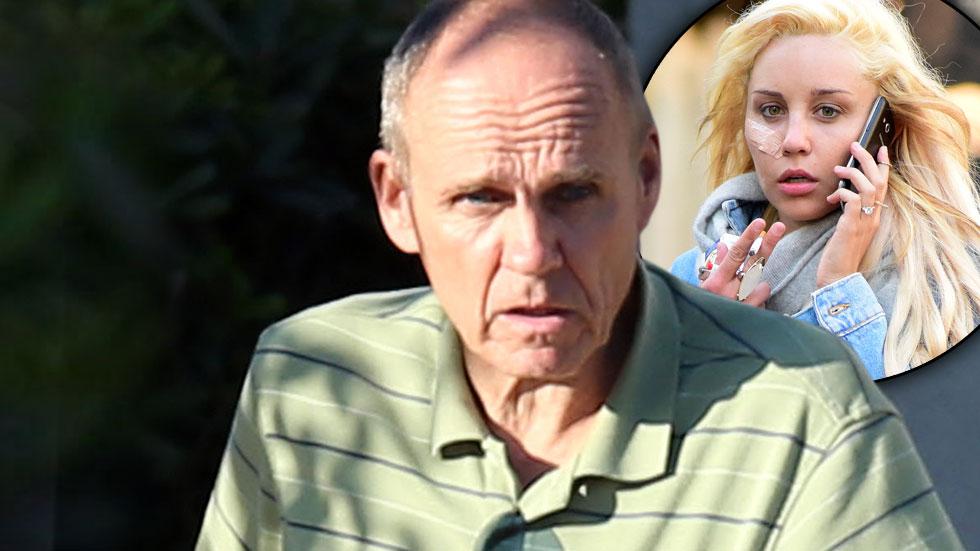When we talk about Amanda Bynes, the conversation often takes a turn toward the darker side of her life. The term "Amanda Bynes Abuse" has been circulating for years, but what does it really mean? Is it just media hype, or is there more to the story than meets the eye? In this article, we’re diving deep into the world of Amanda Bynes, uncovering the truth behind the headlines, and shedding light on the challenges she faced. So, grab your coffee, and let’s get real about the life and struggles of this once-beloved star.
Amanda Bynes abuse is a topic that has sparked debates among fans and critics alike. From her early days as a Disney darling to her dramatic fall from grace, her story is a rollercoaster ride filled with highs and lows. But what exactly constitutes the abuse she faced? Was it external pressures, personal battles, or something else entirely? Let’s explore the layers of this complex narrative.
Before we dive into the nitty-gritty, it’s important to remember that Amanda Bynes is more than just the headlines. She’s a human being with a story worth understanding. This article aims to provide a balanced perspective, highlighting not just the struggles but also the resilience that defines her journey.
Biography of Amanda Bynes: Who Is She, Really?
Let’s take a step back and get to know Amanda Bynes beyond the tabloids. Born on March 3, 1986, in Simi Valley, California, Amanda was destined for the spotlight. She started her acting career at a young age, starring in hit shows like "All That" and "The Amanda Show." Her charm, wit, and quirky humor quickly made her a household name.
But behind the glittering facade of fame, there were challenges brewing. Amanda’s life took a dramatic turn in her late teens and early twenties, leading to a series of high-profile incidents that dominated the headlines. So, who is Amanda Bynes, really? Let’s break it down.
Amanda Bynes: Quick Facts
| Full Name | Amanda Laura Bynes |
|---|---|
| Birth Date | March 3, 1986 |
| Place of Birth | Simi Valley, California, USA |
| Profession | Actress, Comedian |
| Known For | "All That," "The Amanda Show," "What I Like About You" |
These facts only scratch the surface of Amanda’s life. To truly understand her journey, we need to delve deeper into the challenges she faced and the impact they had on her career and personal life.
Understanding Amanda Bynes Abuse: What Happened?
When people talk about Amanda Bynes abuse, they’re often referring to a combination of factors that contributed to her struggles. From mental health battles to substance abuse issues, Amanda’s life became a battleground. But how did it all start?
In the early 2010s, Amanda’s behavior began to raise eyebrows. Public outbursts, erratic driving, and controversial social media posts became frequent occurrences. The media was quick to label her as a "fallen star," but the truth is far more complex. Amanda was dealing with deep-seated issues that were often overlooked by the public eye.
Key Incidents That Shaped the Narrative
- 2012: Amanda was arrested for driving under the influence and resisting arrest.
- 2013: She was hospitalized after setting a neighbor’s mailbox on fire.
- 2014: Amanda was placed under a conservatorship, giving her parents control over her affairs.
These incidents were just the tip of the iceberg. Behind the scenes, Amanda was battling mental health challenges that were often misunderstood by the public.
The Role of Mental Health in Amanda Bynes Abuse
Mental health played a significant role in Amanda’s struggles. Diagnosed with bipolar disorder, Amanda faced challenges that were both internal and external. The pressure of fame, combined with her condition, created a perfect storm that affected her life profoundly.
But what does bipolar disorder mean in the context of Amanda Bynes abuse? It’s a condition characterized by extreme mood swings, ranging from manic highs to depressive lows. For Amanda, these swings manifested in ways that were hard to ignore. Her behavior during this time was often erratic, leading to a series of incidents that made headlines.
Breaking Down the Myths
There are many myths surrounding Amanda Bynes abuse, especially when it comes to her mental health. Here are a few things to consider:
- Mental health struggles are not a sign of weakness.
- Amanda’s behavior was a symptom of her condition, not a reflection of her character.
- Seeking help is a crucial step in overcoming mental health challenges.
Understanding these myths is essential in appreciating Amanda’s journey and the battles she faced.
Substance Abuse: A Factor in Amanda Bynes Abuse?
Substance abuse is another factor that has been linked to Amanda Bynes abuse. During her tumultuous years, Amanda was known to experiment with drugs and alcohol, which only exacerbated her mental health issues. But was substance abuse the root cause of her problems, or was it a symptom of deeper issues?
Experts suggest that substance abuse and mental health often go hand in hand. For Amanda, it was a vicious cycle that was hard to break. Her conservatorship in 2014 was a turning point, providing her with the support she needed to address these challenges.
Seeking Help: Amanda’s Journey to Recovery
Recovery is a long and difficult process, but Amanda has shown signs of progress. Under the care of her conservators, she has received the treatment and support necessary to manage her condition. While she may not be back in the public eye, her focus on healing is a testament to her resilience.
For fans who have followed her journey, seeing Amanda prioritize her mental health is a hopeful sign. It’s a reminder that recovery is possible, even in the face of overwhelming challenges.
The Impact of Media on Amanda Bynes Abuse
The media played a significant role in shaping the narrative around Amanda Bynes abuse. From sensational headlines to invasive reporting, the media’s portrayal of Amanda often lacked empathy and understanding. But how did this affect her life and career?
For someone in the public eye, media scrutiny can be overwhelming. Amanda’s story is a prime example of how the media can amplify existing issues, creating a narrative that is both misleading and damaging. The constant attention made it difficult for Amanda to seek help without being judged or misunderstood.
Reframing the Narrative
Reframing the narrative around Amanda Bynes abuse is essential in providing a more accurate understanding of her journey. Here are a few ways we can shift the conversation:
- Focus on her resilience and recovery rather than her struggles.
- Highlight the importance of mental health awareness and support.
- Encourage empathy and understanding in media reporting.
By changing the way we talk about Amanda, we can create a more supportive environment for those facing similar challenges.
Fans’ Perspective: What Do They Think About Amanda Bynes Abuse?
Fans have always been a crucial part of Amanda’s story. From her early days as a Disney star to her later struggles, her fans have remained loyal and supportive. But what do they really think about Amanda Bynes abuse?
Many fans view Amanda’s struggles as a wake-up call for the entertainment industry. They believe that more needs to be done to support young stars who are navigating the pressures of fame. Others see Amanda’s journey as a testament to the power of resilience and the importance of mental health awareness.
Fan Reactions: A Mixed Bag
Fan reactions to Amanda Bynes abuse have been mixed. Some criticize the media for their role in amplifying the negative aspects of her story, while others praise Amanda for her bravery in seeking help. Here’s a breakdown of fan perspectives:
- Support for Amanda’s recovery and mental health journey.
- Criticism of the media for their invasive reporting.
- Hope for Amanda’s return to the spotlight in the future.
Fans’ voices are an important part of the conversation, reminding us that Amanda’s story is not just about the headlines but about the people who care about her.
Lessons Learned from Amanda Bynes Abuse
Amanda Bynes abuse is more than just a story of struggle; it’s a lesson in resilience, mental health awareness, and the importance of support. Her journey teaches us valuable lessons about the challenges faced by those in the public eye and the need for empathy and understanding.
As we reflect on Amanda’s story, it’s important to remember that she is not defined by her struggles. Her journey is a reminder that recovery is possible, and that mental health challenges can be overcome with the right support.
Key Takeaways
Here are a few key takeaways from Amanda Bynes abuse:
- Mental health struggles are real and deserve attention and support.
- The media has a responsibility to report responsibly and with empathy.
- Recovery is possible, and resilience is a powerful force.
By learning from Amanda’s story, we can create a more supportive and understanding world for those facing similar challenges.
Conclusion: Amanda Bynes Abuse – A Story of Resilience
In conclusion, Amanda Bynes abuse is a complex narrative that goes beyond the headlines. It’s a story of struggle, resilience, and the power of recovery. While Amanda’s journey has been fraught with challenges, it’s also a testament to her strength and determination.
As we continue to follow her story, let’s remember to approach it with empathy and understanding. Amanda’s journey is a reminder that mental health awareness and support are essential for everyone, especially those in the public eye.
So, what’s next for Amanda? Only time will tell, but one thing is certain: her story will continue to inspire and educate those who follow it. If you’ve enjoyed this article, don’t forget to share it with your friends and leave a comment below. Together, we can create a more supportive world for everyone.
Table of Contents
- Biography of Amanda Bynes: Who Is She, Really?
- Understanding Amanda Bynes Abuse: What Happened?
- The Role of Mental Health in Amanda Bynes Abuse
- Substance Abuse: A Factor in Amanda Bynes Abuse?
- The Impact of Media on Amanda Bynes Abuse
- Fans’ Perspective: What Do They Think About Amanda Bynes Abuse?
- Lessons Learned from Amanda Bynes Abuse
- Conclusion: Amanda Bynes Abuse – A Story of Resilience


